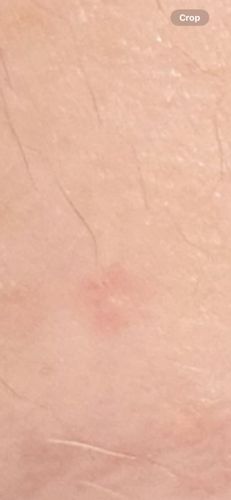Chigger (mite larva)
Scientific Name: Trombiculidae (larva)
Order & Family: Order: Trombidiformes, Family: Trombiculidae
Size: Larvae are microscopic, typically 0.2-0.4 mm in size, and are almost invisible to the naked eye. Adults are larger, up to 1-2 mm, and often red.

Natural Habitat
Chiggers are typically found in tall grass, weeds, wooded areas, berry patches, and other vegetation. They prefer warm, moist environments.
Diet & Feeding
Chiggers feed on skin cells (dissolved tissue) of vertebrates, including humans, birds, and other mammals, by injecting digestive enzymes that liquefy host tissue.
Behavior Patterns
Chiggers are most active during spring and summer months, especially in moist, grassy, or wooded areas. They attach to a host and feed for a few days, typically 3-5 days, before detaching. The bite itself is not immediately painful or noticeable.
Risks & Benefits
Risks: Chigger bites cause intensely itchy red welts, which can lead to scratching and secondary skin infections. While they do not transmit diseases in North America, some Asian species can transmit scrub typhus. Benefits: As larvae, they are parasitic, but adult chiggers are predators of small arthropods and their eggs, acting as natural pest control in their environment.
Identified on: 9/4/2025